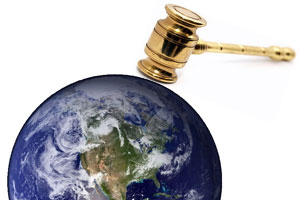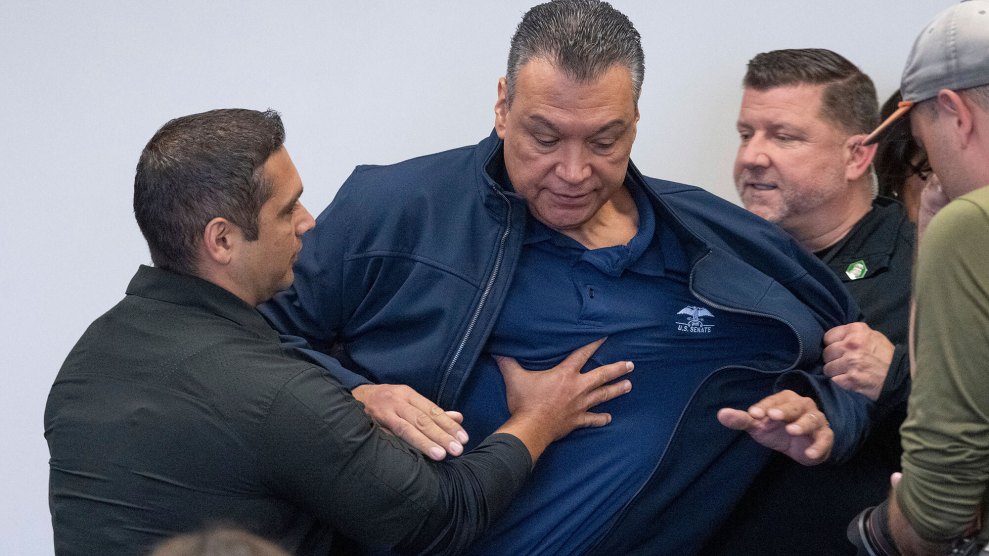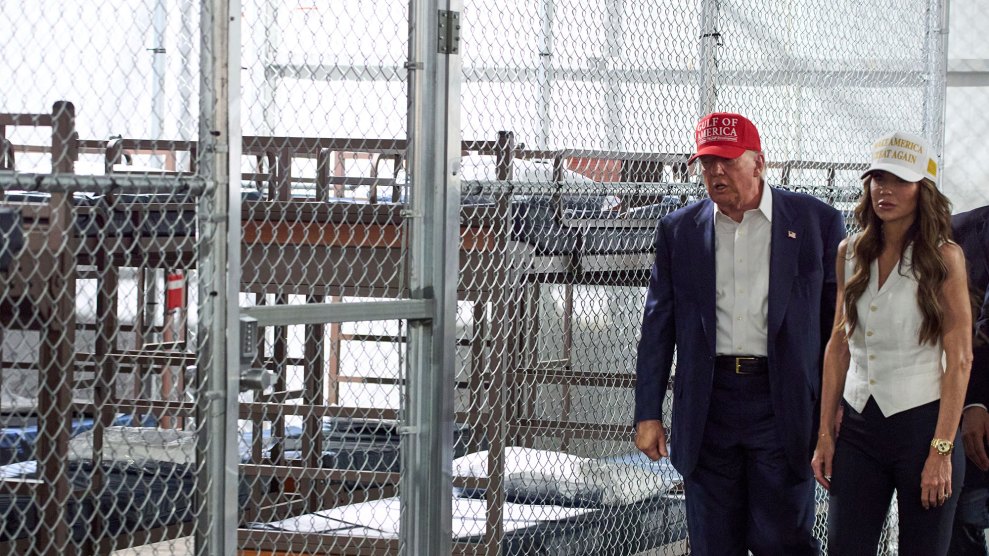
Flickr user <a href="http://www.flickr.com/photos/walkn/3314689121/">walknboston</a> (<a href="http://creativecommons.org/">Creative Commons</a>)/Wikimedia Commons
Also from the Climate Desk: A look at global warming’s implications for international litigation.
If Congress and the president fail to tackle global warming, can courts step in? Can federal judges allow people struggling with the losses of global warming to sue polluters directly?
The idea may at first seem crazy. In a legal world obsessed with claims of judicial activism, the image of a judge taking on a global problem like climate change seems like the punch line to a bad joke at an Exxon board meeting. But it turns out there is a long and proud history of judges addressing pollution in the absence of environmental regulation. For much of the last century—long before Congress acted—federal courts allowed plaintiffs to seek injunctions to stop all kinds of pollution. Successful suits prevented an ore smelter from releasing deadly atmospheric arsenic over the homes and families of Utah, the City of Chicago from draining its sewage into St. Louis’ drinking supply, and New York City from dumping its garbage into the Atlantic, where it washed up on the beaches of the New Jersey Shore. Today, states and environmentalists are turning to these and other historic precedents to make the case that climate change, too, belongs in the courts when the other branches of government refuse to act.

Though the cause-and-effect aspect of this argument might seem hard to prove in court, global-warming victims in other corners of the country started filing similar lawsuits. In Comer v. Murphy Oil, residents of Mississippi’s Gulf Coast sued nearby refineries for damages they suffered during Hurricane Katrina, alleging that the refineries’ greenhouse-gas emissions contributed to the force of the storm. In 2008, in Native Village of Kivalina v. Exxon, residents of a small village on a barrier island off the Alaskan coast, whose homes are being steadily submerged by rising sea levels, filed suit against two dozen energy companies for their contribution to climate change. The villagers, who are native Inupiat, seek more than $400 million in damages to cover the cost of relocating their homes, again using the doctrine of nuisance law.
Each of these cases was dismissed at the trial-court level. The judges said that the suits raised a “political question” not fit for the judicial branch to rule on—a tool that allows judges to punt tricky cases they don’t want to decide. Two of the lower courts also said that the parties lacked legal standing to bring the lawsuits, because they could not show their injuries were sufficiently traceable to the defendants’ conduct. However, the plaintiffs appealed these dismissals to federal courts of appeals, arguing that they do have standing and that the “political question” doctrine does not apply.
Then, to the shock of the legal community and even some environmentalists, two federal appeals courts reversed these rulings. Last September, after more than three years of deliberating, a two-judge panel on the US Court of Appeals for the 2nd Circuit overturned the dismissal of Connecticut v. AEP in a sweeping 139-page opinion. A few days later, a three-judge panel of the US Court of Appeals for the 5th Circuit released a similar opinion reinstating the Katrina victims’ lawsuit. The five judges responsible for these rulings—three of whom were appointed by Republican presidents—found that the plaintiffs had standing and that the evidence of the relationship between greenhouse gases and climate change was sufficient for the cases to go forward. The courts did not punt because of the “political question” doctrine, pointing out that federal courts have successfully handled public-nuisance claims involving environmental damage for more than a century.
Here the 2nd Circuit relied heavily on a little-known, century-old Supreme Court case called Georgia v. Tennessee Copper Co. The suit began in the early 1900s, when the State of Georgia sued two copper companies in Tennessee for emitting noxious emissions that destroyed plants and crops in Georgia. No less a figure than Justice Oliver Wendell Holmes found the copper companies liable for the nuisance of air pollution and ordered the companies to reduce their emissions. When the companies failed to fully comply, the court set emissions limits, with monitoring requirements and costs divided between the defendants. In other words, the court established the same sort of regulatory regime Congress would introduce 50 years later with the 1970 Clean Air Act.
Today, federal courts dealing with global-warming lawsuits are faced with the same dilemma as the Supreme Court was in Tennessee Copper, only on a much larger scale. Air pollution from one state is causing harm to other states (indeed, to the whole world). Despite the encouraging rulings from the courts of appeals, however, today’s global-warming nuisance suits face an uncertain future. Last month, the 5th Circuit announced a rehearing en banc for the Katrina victims’ lawsuit, meaning that all of the court’s judges will sit and rehear the case. The Alaskan villagers, who lost before the district court, now move to the 9th Circuit Court of Appeals. One or more of these plaintiffs may well wind up before the Supreme Court.
And there a conservative majority may be more sympathetic to the fossil-fuel industry, which argues that the courts should butt out because Washington is doing plenty about global warming. The industry’s Exhibit A is, in fact, another court case: the Supreme Court’s 2007 ruling in Massachusetts v. EPA, which held that greenhouse gases are air pollutants within the meaning of the Clean Air Act, allowing the EPA to regulate the gases directly.
But the 2nd Circuit in September rejected the argument that this displaced the nuisance suits, noting that the EPA had not yet used the Clean Air Act to regulate greenhouse gases. The court acknowledged that this could change if and when the Obama administration gets moving.
Judge Peter Hall, the author of the 2nd Circuit’s opinion, conceded the same point in a recent speech at Georgetown Law School. The courts would happily get out of the business of hearing nuisance suits about climate change, he said, if the EPA does its job in restricting these emissions—or better yet, if Congress passes a comprehensive climate bill. In the meantime, however, Judge Hall added that judges have the responsibility to take seriously nuisance lawsuits brought by property owners facing strengthening hurricanes and rising sea levels. These lawsuits, he said, probably provide a backstop and “some small impetus” to stonewalling lawmakers. It’s a trade-off: Polluters can either get out of the way of Congress or face the, well, nuisance of lawsuits for decades to come.
This piece was produced by Slate as part of the Climate Desk collaboration.
















